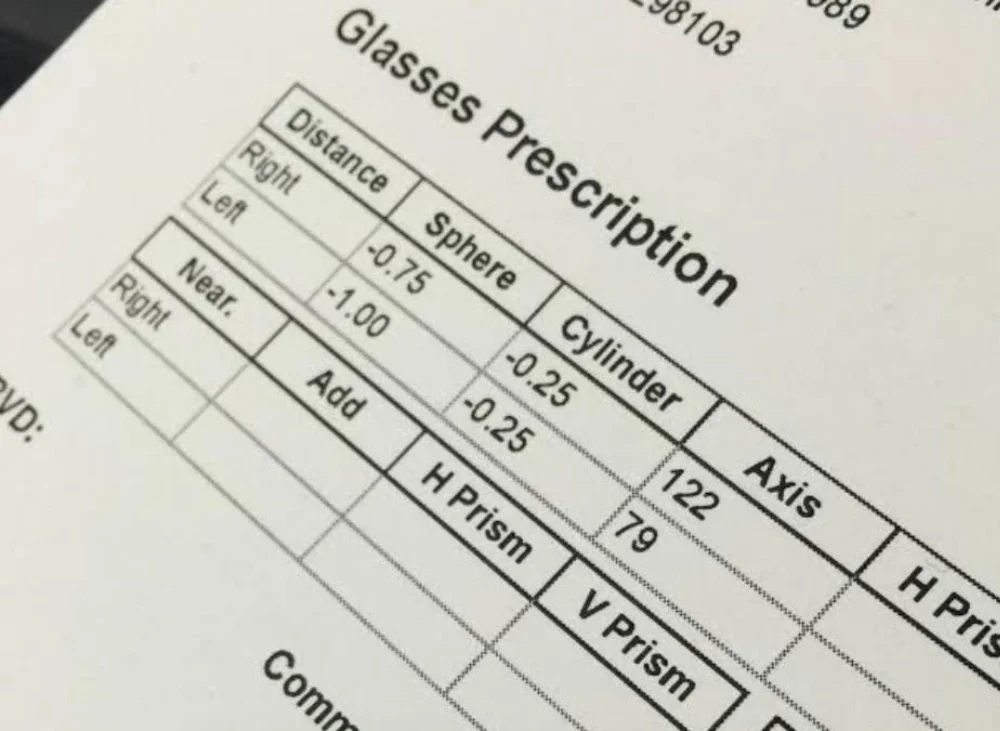Understanding Your Eyeglass Prescription
Understanding Your Eyeglass Prescription
Understanding your eye prescription is crucial for getting the correct lenses for your glasses. Here’s a guide to help you decode the information:
OD and OS
- OD (Oculus Dexter): Refers to the right eye.
- OS (Oculus Sinister): Refers to the left eye.
- OU (Oculus Uterque): Refers to both eyes.
Sphere (SPH)
The sphere value indicates the amount of lens power, measured in diopters (D), needed to correct nearsightedness (myopia) or farsightedness (hyperopia).
- Negative (-) SPH values correct nearsightedness.
- Positive (+) SPH values correct farsightedness.
Cylinder (CYL)
The cylinder value corrects astigmatism, which is caused by an irregularly shaped cornea or lens. This value also uses diopters and can be either positive or negative.
- If there’s no number in this column, it means you don’t have astigmatism, or it’s too mild to require correction.
Axis
The axis value, ranging from 1 to 180 degrees, indicates the orientation of astigmatism. It specifies the direction in which the cylinder power should be placed in the lens.
Add
The addition (Add) value is used for bifocal or progressive lenses. It signifies the additional magnifying power needed for reading or other close-up activities, commonly prescribed for presbyopia.
Prism
Prism correction is used to correct double vision (diplopia) by aligning the eyes properly. It’s measured in prism diopters and specifies the amount and direction of the prism:
- Base Up (BU)
- Base Down (BD)
- Base In (BI)
- Base Out (BO)
PD (Pupillary Distance)
Pupillary Distance is the distance between the centers of your pupils, measured in millimeters (mm). Accurate PD is essential for proper lens placement.
Common Abbreviations and Terms
- DV: Distance Vision
- NV: Near Vision
- PL: Plano (zero power)
- DS: Diopters Sphere (when no astigmatism correction is needed)
- VA: Visual Acuity
Example Prescription
Here’s a sample prescription and its breakdown:
- OD: -2.00 SPH -1.00 CYL 180 Axis
- Right eye: -2.00 diopters for nearsightedness, -1.00 diopters for astigmatism, and 180 degrees for the axis.
- OS: -1.50 SPH -0.50 CYL 90 Axis
- Left eye: -1.50 diopters for nearsightedness, -0.50 diopters for astigmatism, and 90 degrees for the axis.
- Add: +2.00
- Additional +2.00 diopters for reading.
- PD: 63 mm
- Pupillary distance is 63 millimeters.
By understanding these terms and values, you can ensure your eyeglasses are perfectly tailored to your vision needs. If you have any questions, feel free to contact Empire Optical for further assistance.

